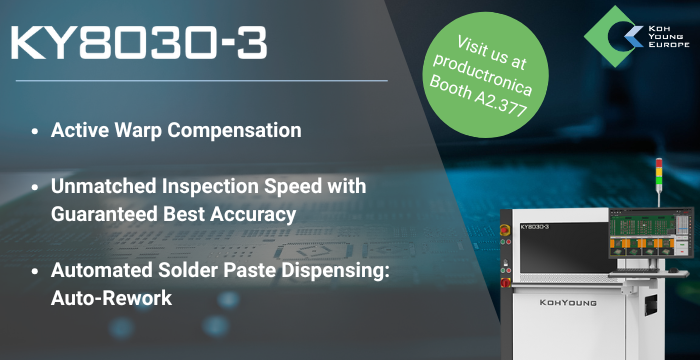Answer:
Most likely, the answer is no. Questions around definitive tilt accuracy values are always difficult to answer, as many environmental factors need to be accounted for when it comes to MEMS sensor performance. Typically, consumer grade accelerometers struggle to detect less than 1° of tilt in dynamic environments. To show this, a general-purpose, consumer grade accelerometer is compared with a next-generation, low noise, low drift, and low power MEMS accelerometer. The comparison looks at a number of error sources present in tilt applications and what errors can be compensated or removed.
Errors such as zero-g bias accuracy, zero-g bias shift due to soldering, zero-g bias shift due to PCB enclosure alignment, zero-g bias tempco, sensitivity accuracy and tempco, nonlinearity, and cross-axis sensitivity are observable and can be reduced through the postassembly calibration processes. Other error terms such as hysteresis, zero-g bias shift over life, sensitivity shift over life, zero-g shift due to humidity, and PCB bend and twist due to temperature variations over time can’t be addressed in calibration or else they require some level of in-situ servicing to be reduced. For this comparison it is assumed that cross-axis sensitivity, nonlinearity, and sensitivity are compensated, as they require much less effort to minimize compared to tempco offset drift and vibration rectification.
Table 1. ADXL345 Error Source Estimates
| Sensor Parameter | Exemplary Performance | Condition/Note | Typical g | Application Error Tilt °
|
| Noise | X/Y axis 290 µg/√Hz | Bandwidth at 6.25 Hz | 0.9 mg | 0.05°
|
| Bias drift | Allan deviation | Short-term (for example, 10 days) | 1 mg | 0.057°
|
| Initial offset | 35 mg | No compensation | 35 mg | 2°
|
| | With compensation | 0 mg | 0°
|
| Error | No compensation | 6.25 Hz bandwidth | 36.9 mg | 2.1°
|
| Error | With compensation | 6.25 Hz bandwidth | 1.9 mg | 0.1° |
Table 1 shows an estimate of the consumer grade ADXL345 accelerometer’s ideal performance specifications and the corresponding tilt errors. When trying to achieve the best possible tilt accuracy, it is imperative to apply some form of temperature stabilization or compensation. For this example, a constant temperature of 25°C is assumed. The largest error contributors that can’t be fully compensated out are offset over temperature, bias drift, and noise. Bandwidth can be lowered to reduce the noise as inclination applications typically require bandwidths below 1 kHz.
Table 2. ADXL355 Error Source Estimates
| Sensor Parameter | Exemplary Performance | Condition/Note | Typical g | Application Error Tilt °
|
| Noise | 25 µg/√Hz | Bandwidth at 6.25 Hz | 78 µg | 0.0045°
|
| Bias drift | Allan deviation | X/Y axis short-term (for example,10 days) | <10 µg | 0.00057°
|
| Initial offset | 25 mg | No compensation | 25 mg | 1.43°
|
| | With compensation | 0 mg | 0°
|
| Total error | No compensation | 6.25 Hz bandwidth | 25 mg | 1.43°
|
| Total error | With compensation | 6.25 Hz bandwidth | 88 µg | 0.005° |
Table 2 shows the same criteria for the ADXL355. Short-term bias values were estimated from the root Allan variance plots in the ADXL355 data sheet. At 25°C, the compensated tilt accuracy is 0.1° for the general-purpose ADXL345 and for the industrial grade ADXL355 the tilt accuracy is 0.005°. Comparing the ADXL345 and ADXL355, it can be seen that larger error contributors like noise have been reduced significantly from 0.05° to 0.0045° and that bias drift has been reduced from 0.057° to 0.00057°. This shows the massive leap forward in MEMS capacitive accelerometer performance in terms of noise, temperature coefficient, offset, and bias drift, enabling much higher levels of inclination accuracy under dynamic conditions.

For the ADXL355 the tempco offset drift from 25°C to 85°C is

The importance of selecting a higher grade accelerometer is crucial in achieving required performance, especially if your application demands <1° tilt accuracy. Application accuracy can vary depending on application conditions (large temperature fluctuations, vibration) and sensor selection (consumer grade vs. industrial or tactical grade). In this case, the ADXL345 will require extensive compensation and calibration effort to achieve <1° tilt accuracy, adding to the overall system effort and cost. Depending on the magnitude of vibrations in the end environment and temperature range, this may not even be possible. Over 25°C to 85°C, the tempco offset drift is 1.375°—already exceeding the requirement for less than 1° of tilt accuracy.
Table 3. Errors Shown in Degrees of Tilt
|
|
| Maximum Tilt Error 0 g Offset vs. Temperature (°/°C) | Noise Density (°/√HZ) | Vibration Rectification (°/g2 rms)
|
| ADXL354 | 0.0085 | 0.0011 | 0.0231
|
| ADXL355 | 0.0085 | 0.0014 | 0.0231 |
1±2 g range in a 1 g orientation offset due to 2.5 g rms vibration.
Vibration rectification error (VRE), as shown in Table 3, is the offset error introduced when accelerometers are exposed to broadband vibration. When an accelerometer is exposed to vibrations, VRE contributes significant error in tilt measurements when compared to 0 g offset over temperature and noise contributions. This is one of the key reasons it is left off data sheets, as it can very easily overshadow other key specifications.
Table 4. ADXL354/ADXL355/ADXL356/ADXL357 Measurement Ranges
| Part | Measurement Range (g) | Bandwidth (kHz)
|
| ADXL354B | ±2, ±4 | 1
|
| ADXL354C | ±2, ±8 | 1
|
| ADXL355B | ±2, ±4, ±8 | 1.5
|
| ADXL356B | ±10, ±20 | 1.5
|
| ADXL356C | ±10, ±40 | 1.5
|
| ADXL357B | ±10.24, ±20.48, ±40.96 | 1 |
In environments with higher magnitude vibrations, it is essential to have a higher g range accelerometer in order to minimize clipping leading to offsets. Table 4 shows the ADXL35x family of accelerometers and their corresponding g range and bandwidths.
Choosing a part from the ADXL35x family for tilt applications will provide high stability and repeatability, and this family is robust to temperature fluctuation and broadband vibration, as well as requires less compensation and calibration compared to a lower cost accelerometer. The hermetic package helps ensure that the end product conforms to its repeatability and stability specifications long after it leaves the factory. By providing repeatable tilt measurement under all conditions, Analog Devices’ next-generation accelerometers enable minimal tilt error without extensive calibration in harsh environments, as well as minimizing the need for post-deployment calibration.
Author: Chris Murphy [christopher.murphy@analog.com] is an applications engineer with the European Centralized Applications Center, based in Dublin, Ireland. He has worked for © Analog Devices since 2012, providing design support on motor control and industrial automation products. He holds a master’s of engineering in electronics by research and a bachelor’s of engineering in computer engineering.

 For the ADXL355 the tempco offset drift from 25°C to 85°C is
For the ADXL355 the tempco offset drift from 25°C to 85°C is
 The importance of selecting a higher grade accelerometer is crucial in achieving required performance, especially if your application demands <1° tilt accuracy. Application accuracy can vary depending on application conditions (large temperature fluctuations, vibration) and sensor selection (consumer grade vs. industrial or tactical grade). In this case, the ADXL345 will require extensive compensation and calibration effort to achieve <1° tilt accuracy, adding to the overall system effort and cost. Depending on the magnitude of vibrations in the end environment and temperature range, this may not even be possible. Over 25°C to 85°C, the tempco offset drift is 1.375°—already exceeding the requirement for less than 1° of tilt accuracy.
Table 3. Errors Shown in Degrees of Tilt
The importance of selecting a higher grade accelerometer is crucial in achieving required performance, especially if your application demands <1° tilt accuracy. Application accuracy can vary depending on application conditions (large temperature fluctuations, vibration) and sensor selection (consumer grade vs. industrial or tactical grade). In this case, the ADXL345 will require extensive compensation and calibration effort to achieve <1° tilt accuracy, adding to the overall system effort and cost. Depending on the magnitude of vibrations in the end environment and temperature range, this may not even be possible. Over 25°C to 85°C, the tempco offset drift is 1.375°—already exceeding the requirement for less than 1° of tilt accuracy.
Table 3. Errors Shown in Degrees of Tilt
 For the ADXL355 the tempco offset drift from 25°C to 85°C is
For the ADXL355 the tempco offset drift from 25°C to 85°C is
 The importance of selecting a higher grade accelerometer is crucial in achieving required performance, especially if your application demands <1° tilt accuracy. Application accuracy can vary depending on application conditions (large temperature fluctuations, vibration) and sensor selection (consumer grade vs. industrial or tactical grade). In this case, the ADXL345 will require extensive compensation and calibration effort to achieve <1° tilt accuracy, adding to the overall system effort and cost. Depending on the magnitude of vibrations in the end environment and temperature range, this may not even be possible. Over 25°C to 85°C, the tempco offset drift is 1.375°—already exceeding the requirement for less than 1° of tilt accuracy.
Table 3. Errors Shown in Degrees of Tilt
The importance of selecting a higher grade accelerometer is crucial in achieving required performance, especially if your application demands <1° tilt accuracy. Application accuracy can vary depending on application conditions (large temperature fluctuations, vibration) and sensor selection (consumer grade vs. industrial or tactical grade). In this case, the ADXL345 will require extensive compensation and calibration effort to achieve <1° tilt accuracy, adding to the overall system effort and cost. Depending on the magnitude of vibrations in the end environment and temperature range, this may not even be possible. Over 25°C to 85°C, the tempco offset drift is 1.375°—already exceeding the requirement for less than 1° of tilt accuracy.
Table 3. Errors Shown in Degrees of Tilt



